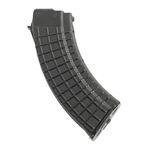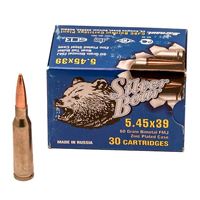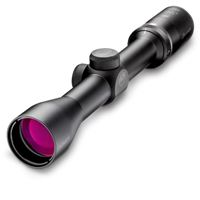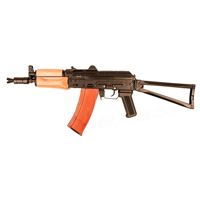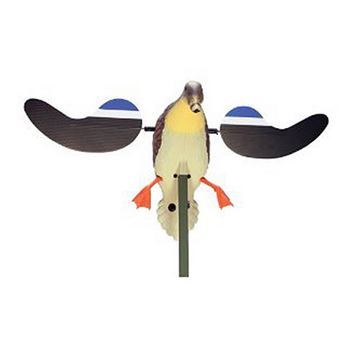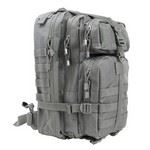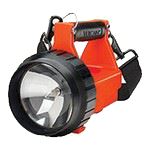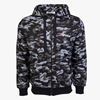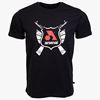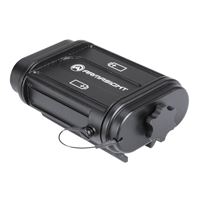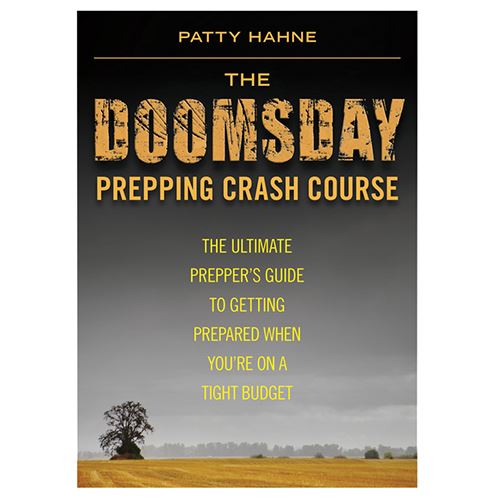It will come as no surprise to the readers that America has a love affair with the 1911. I can’t think of any other firearm that has lasted 100 years, with all its fundamental design principles intact. For that matter, I can’t think of any product design that has lasted 100 years without major change. However, there is a big difference between an off-the-shelf 1911 and a custom fit 1911.
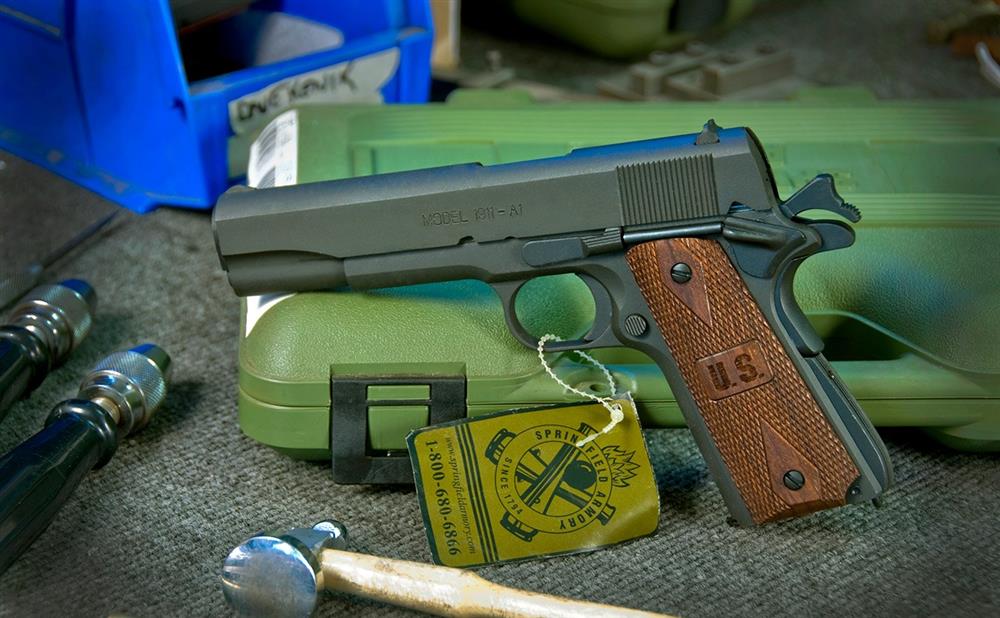
In all candidness, the term “love affair” may not be the most appropriate. A better description might be a “love/hate” relationship. The issue is that the 1911 is a finicky design and has earned itself a reputation as a handgun that may or may not run properly out of the box.
When my interest in 1911s started a couple of decades ago, I quickly learned not to bother test firing them—chances were that they wouldn’t work, and test firing would just be a waste of perfectly good ammunition and my time. Instead, I took them from the gun store directly to the gunsmith for a reliability package, trigger job, and possibly some component change outs, depending on the particular model I purchased and its intended use.
Tom Givens, owner of Range Master in Memphis, Tennessee, a lead instructor and 1911 aficionado, recently proclaimed: “The 1911 design does not lend itself well to modern manufacturing methods. Most over the counter 1911s still need some attention from a qualified hand fitter (pistolsmith).” While that may be a bit extreme as manufacturing techniques have improved in recent years and most 1911s work just fine, there is a quantitative benefit to hand building a 1911 pistol.
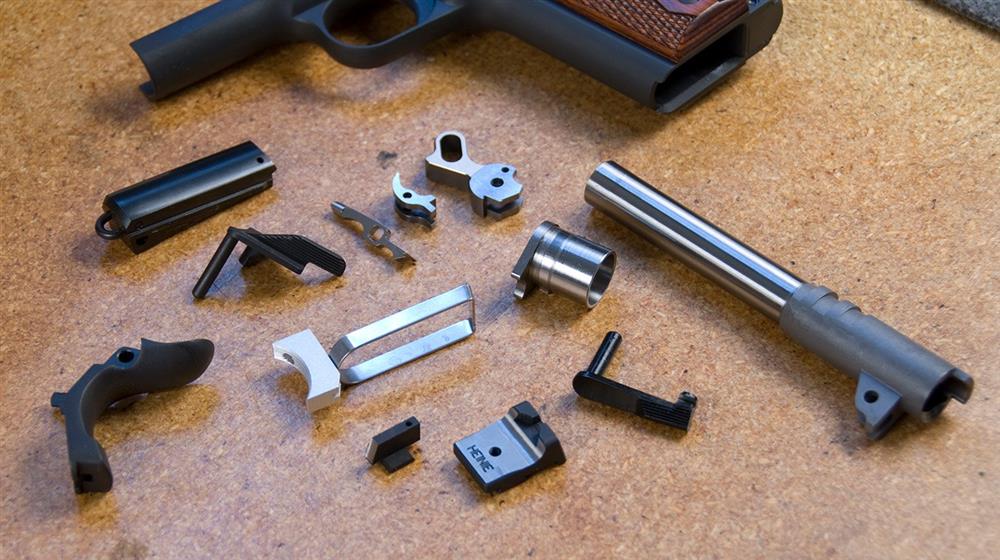
It’s easy to build a reliable 1911. It’s easy to build an accurate 1911. However, it takes the skill, handwork, and experience of a master artisan to squeeze the ultimate accuracy out of the 1911, while maintaining complete reliability. The proliferation of high-end, custom 1911s is a testament to that fact.
The exact process of accurizing and increasing reliability has always been shrouded in mystery to me. I understood the concepts, but not the details.
Jim Garthwaite, Pistolsmith
Jim opened his shop in 1978 with a specialty in defensive 1911s and Browning Hi Powers. He continues to be a one-man show. Every facet of the work is done personally, and every gun he works on is treated like his own. As a founding member of the American Tactical Shooting Association, Jim is a practicing tactician, and the lessons he learns perfecting the craft goes into every one of his guns. As a self-taught smith, he takes special pride in his selection as American Pistol Smith Guild, 2004 Pistolsmith of the Year.
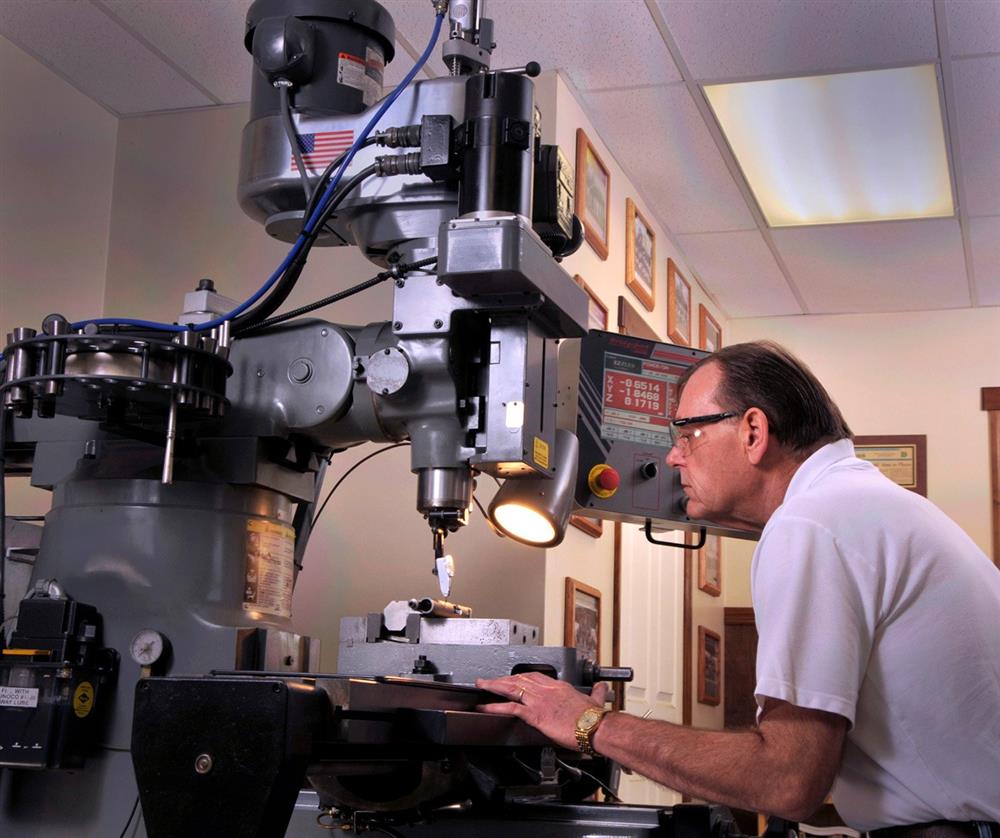
Pistolsmithing Class
Jim’s class runs 5 days in his central Pennsylvania shop and is billed as providing “a thorough knowledge and understanding of the procedures to build and maintain the Browning-designed pistol.” The tuition includes a forged 1911 frame and slide, Kart or Bar-Sto match barrel, Heinie or Novak fixed rear sights, all component parts, Coco Bolo stocks, Teflon coating or bluing, and personal instruction.
Scheduled four times a year, participation is limited to six, so Jim can offer plenty of personal attention. The primary lessons of the class include sight installation, frame-to-slide fitting, precision barrel fitting, trigger work, component shaping and malfunction diagnosis. The end result is that participants learn to custom fit a 1911 and leave the class complete with the satisfaction of hand fitting and assembling it themselves.
Springfield Armory Components
All Garthwaite pistols start life as a fully-assembled, bare-bones basic, Springfield Armory pistol. Jim works with Springfield Armory because of the quality and consistency of its products that he has seen over 20 years.
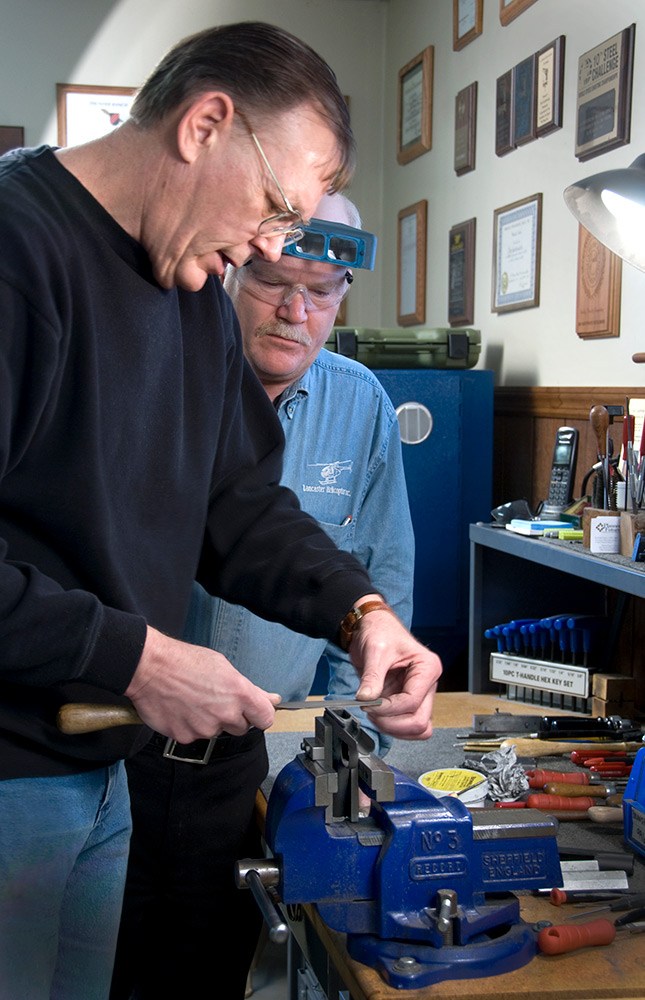
Jim starts with complete guns since they are no more expensive than purchasing the parts separately. Besides the forged slide and frame, firing pin, guide rod, magazine catch, springs, and pins, all factory components are replaced with oversized parts that are meticulously hand-fitted for perfect fit and function which affords a Garthwaite’s pistol its superb accuracy and reliability. The class was to follow the same path, with each of us learning the hand fitting process of every part.
In Jim’s work, he uses various materials depending on client requirements, but for the class he prefers carbon steel frames and slides, as he finds it easier for students to fit and work by hand.
On the Bench
Prior to the start of the class, Jim removed the factory sights, milled dovetails in the slide for the new sights and widened and flared the ejection ports of each student’s pistol. He also recontoured the rear sights to allow the slide to be racked by the front edge of the sight.
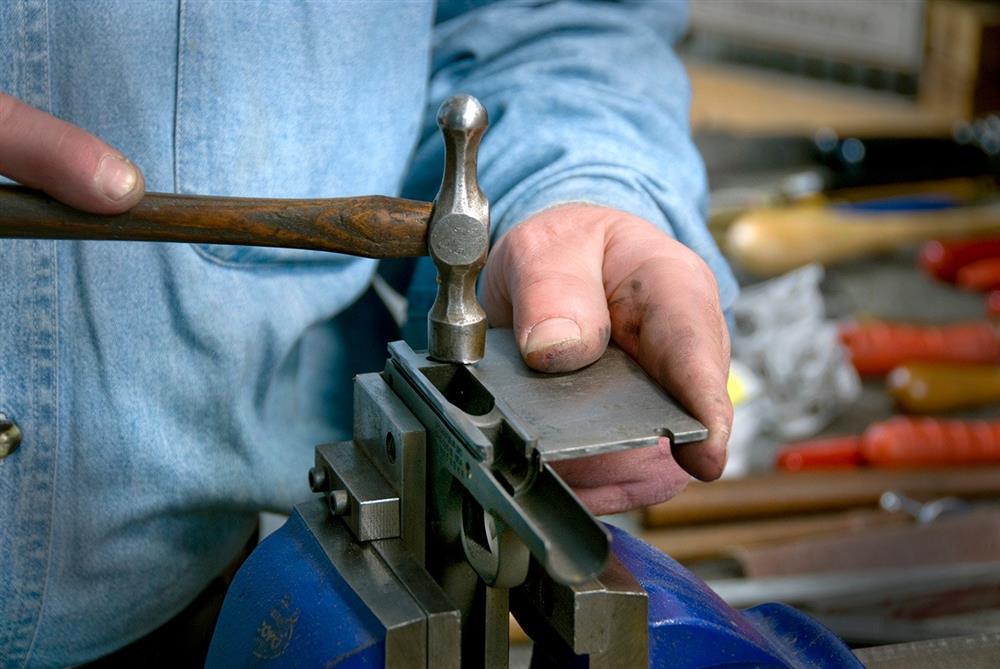
Day one started off with a hands-on demo of complete 1911 disassembly and reassembly. We then moved onto fitting a Heinie rear sight and MGW blank dovetail front sight. The dovetails, like all machining that was to be done, were cut slightly undersize so we could hand file them for a perfect fit. We kept filing and fitting until light no longer filtered through between the parts.
Both sights need to be snug enough that they didn’t drift, but loose enough to be able to make windage adjustments. The height of the front sight was purposely left taller than needed so its height could be adjusted during test firing to match our carry ammunition preference. I must admit, I thought sight installation was one of the easier jobs for a gunsmith, but it turned out to be much more involved than I imagined. The price they charge for the service is certainly justifiable!
Job two was fitting the slide to the frame. Since the gun started as a finished pistol the slide already fit onto the frame. The process entailed measuring the height of the rails in the slide, shimming the rail slot in the frame to match the rail height, and planishing the frame’s rails down with a hammer until the slide fit was tight, even and without wiggle.
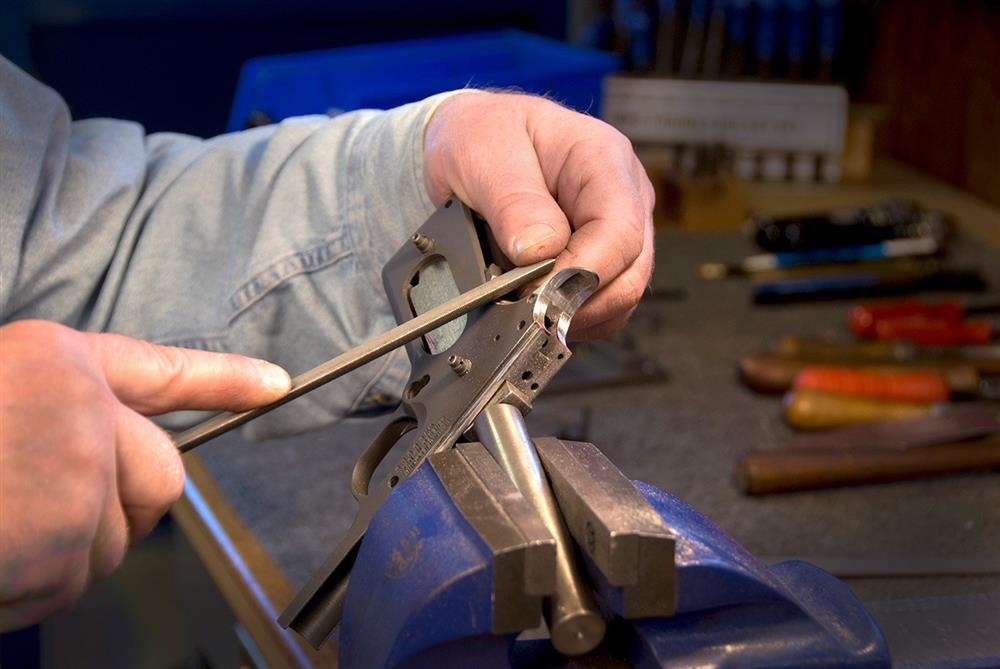
Next, we filed off the misplaced steel and lapped the slide and frame together with 600-grit, aluminum oxide compound. The process was repeated several times until the slide fit properly. With just a touch of play left, Jim stated the minimal residual movement would be removed once the barrel was fit. Surprised again, my slide was not far off, and the fitting process was far easier and faster than I had anticipated. However, that’s not always the case. Sometimes, the factory slide fit is quite loose and the tightening process becomes lengthy.
In addition to the quality of the barrel itself, one of the most important elements of a pistol’s accuracy is the fit of the barrel to the slide. Extraneous movement must be eliminated so the barrel returns to battery consistently with every shot.
Starting with an oversize Kart match barrel, the first step was to measure the hood width and length and compare it to the breech face to determine how much material needed to be removed. Rather than doing all the work manually, whenever possible, Jim prefers to do about 90% of the cutting by machine and leave a few thousandths of an inch of material for hand fitting. This greatly speeds up the workflow, yet leaves the final fitting to be perfected by hand.
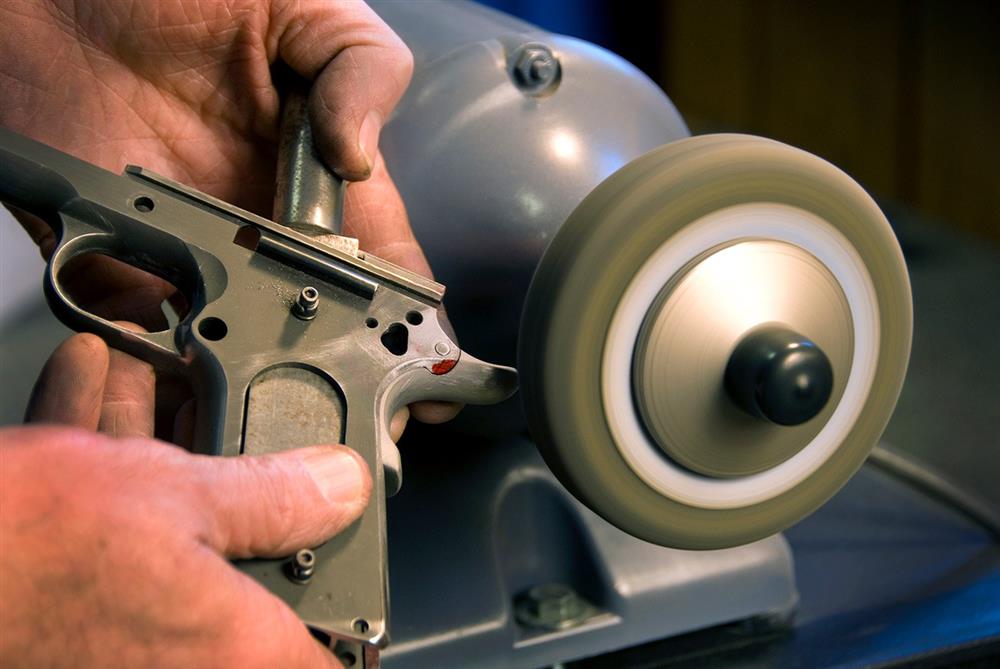
After the excess barrel hood material was machined, the final portion was hand filed and lapped. With the barrel installed and held in battery, the barrel lugs were then hand cut. This was done with the slide/barrel positioned on the frame. We used a lever to aid in pushing the slide/barrel into the special lug cutter as it was rotated by hand. This ensured that the lugs were cut to the correct position and enabled the thumb safety to be engaged.
Again, hand filing and lapping, finished and smoothed out the operation. After fitting the barrel link, the last process in the barrel installation was the sizing and fitting of the barrel bushing. The barrel fitting was a time-consuming process, but absolutely necessary to ensure accuracy.
With the barrel fitting completed, we were able to assemble the barrel and recoil spring within the slide, and mate it to the frame to check the function. This step was encouraging as we saw for the first time that the barrel lowered and returned to battery perfectly with the cycling of the slide. It was also exciting to see that the final fitting of the barrel tightened the slide fit to the point that there was absolutely no extraneous movement—a hallmark of a well-built pistol.
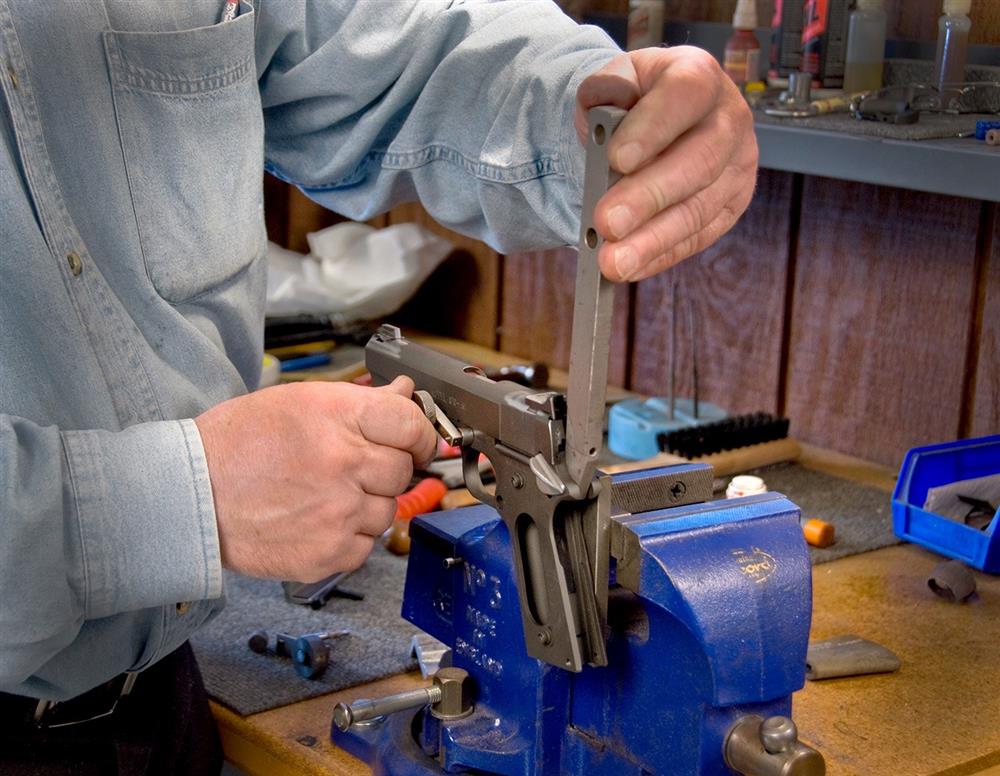
Checking the head space with go/no-go gauges, we determined that the chamber in my barrel needed to be reamed to fit the cartridge properly, since we reduced the barrel hood length. We increased the chamber’s depth by hand reaming it a few thousandths of an inch deeper. To ensure that we didn’t cut too deeply, we reamed it in multiple steps until the barrel locked perfectly with the go gauge in the chamber.
Installing a Wilson Combat grip safety was next on the list. The contour of grip safety, surrounding the hinge location, was smaller and shaped differently than the frame, so we used a bolt-on jig as a guide and removed most of the excess frame material with a belt sander. The frame and entire length of grip safety were then reshaped, by hand filing until they melded together perfectly. Though not necessary for reliability or accuracy, a custom-fitted grip safety gives the pistol a professional presentation, and greatly affects how the firearm feels in the hand.
With all the hand filing, I received plenty of experience with a gunsmith’s best friend, Dykem. This colored liquid is applied along parts that need to be fitted together. Quickly drying to a very thin coating, the Dykem is removed where the parts rub together, leaving a visual indication of the exact location where additional filing is required. Difficult-to-fit parts, such as the grip safety, required numerous applications.
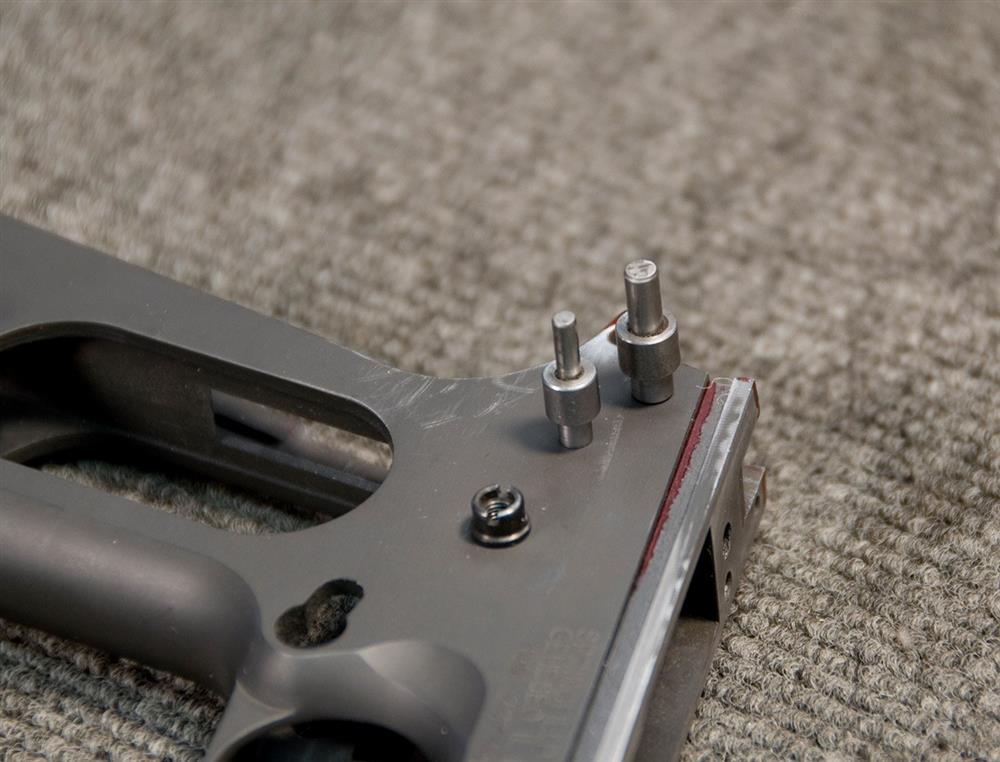
After shaping and fitting the safety, the fire control parts were installed. We started by cleaning out the frame’s trigger bow slots and fitted an over-sized trigger. While doing so, we made sure it functioned with a magazine in place. A failure would result in having the bows adjusted. The hammer, sear, and disconnector that we used were specially built for Jim to his exacting specifications. In addition to being used in his custom pistols, they are also available through his website.
We first tested the sear engagement to the hammer, with the use of jigs that mounted onto the frame for easy inspection of the parts. The jigs inserted into the sear and hammer pin holes, so they held the parts outside the frame in the precise relationship they would be when installed. As it turned out, the sears and hammers needed almost no adjustment due the outstanding precision of the Electrical Discharge Machining (EDM) used in their manufacture. With the fire control system in place and the trigger breaking clean at about 4 lbs, we adjusted the triggers’ take-up and over-travel, and made the final function adjustments to the safeties.
The main spring housing needed major reshaping to meld the edges of the housing to the frame, so it looked and felt like a single part. Like the grip safety, the housing is not responsible for increasing accuracy or reliability, but it greatly affects how the pistol feels in the hand and its visual appeal.
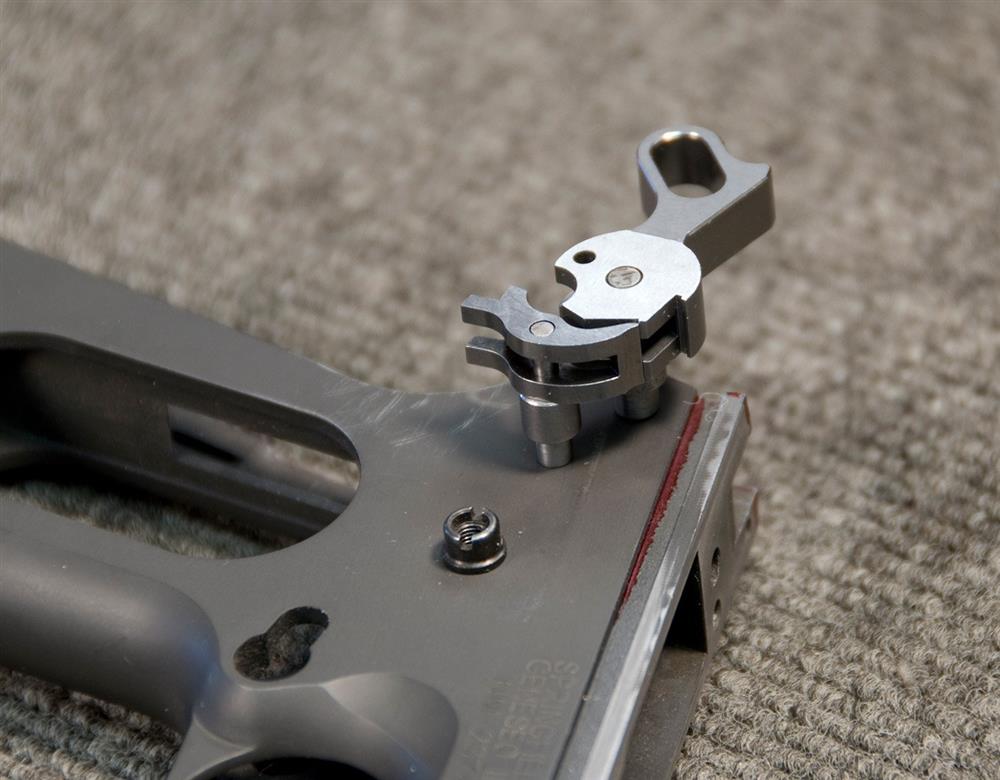
To reduce the possibility of an accidental discharge from a live round hitting the ejector and to eliminate a common snag point, the angle of ejector was reshaped. The overall length was also shortened to allow a cartridge to be ejected with plenty of clearance past the barrel opening and ejection port. Depending on the design, the ejector was then reinstalled with a pin or with Loctite. Likewise, the extractor was tuned to ensure it located itself properly within the frame and achieved a positive lock on the case edge without being overly tight.
With all the integral components reshaped, fitted and installed, the frames’ slide rails and the rear of the slide, along with the extractor, were filed and reshaped until they were flush fit.
The final part to be fitted was a set of Craig Spegel, Cocobolo grip panels. We confirmed that the screw holes were sized and located correctly, and did a small amount of carving to the left panel to clear the rotation of the safety. Once completed, we were finally able to put the fully assembled and fitted product in our hand. I might be biased, but it was the best fitting 1911 I have ever held. The difference between our handiwork and my other 1911s was clearly the work we put into melding and reshaping the grip safety and main spring housing to the frame.
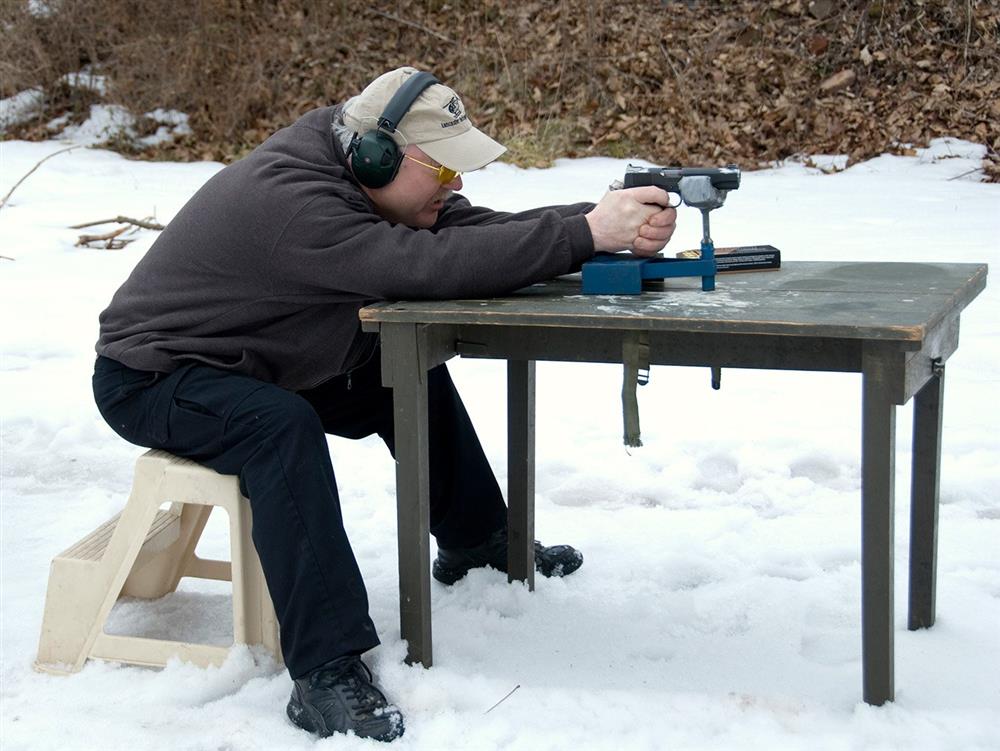
This was also our first opportunity to test feeding reliability. We cycled—without firing—FMJ and several types of hollow point ammunition to test function. Feeding was without failure, so the pistol was finally ready for live fire testing.
With just an hour left of day four, we finished with a hands-on demonstration of checkering. The thought of doing such precise work by hand initially raised a concern, but I found the process less complicated than I had anticipated.
Simply stated, hand checkering is done with special files cut at the specific lines spacing required for checkering. For the front and rear straps, a 30 LPI file is run back and forth along the grip, and along a guide to keep it straight, to cut approximately 10, 30 LPI grooves simultaneously in the frame in a single direction. The file is moved sideways to cut additional grooves and the process was repeated until the entire grip was cut. The grooves were then cut in the perpendicular direction to form the checkering. While Jim made it look simple, the process was definitely an art and experience the best teacher.
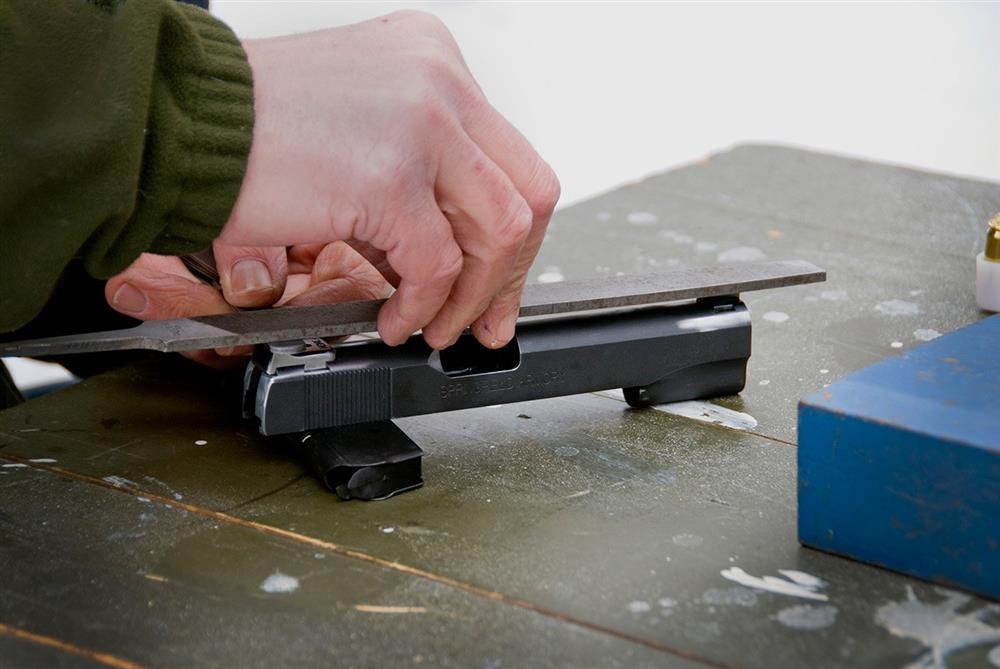
The morning of the last day of class was the live fire testing. We started on the bench with a rest to check accuracy and sight alignment, with each participant’s choice of carry ammunition. Jim brought along a sight pusher, so we made windage adjustments at the range. During the fitting process, we purposely left the front sight heights tall, so we could adjust them on the range.
The process was quite simple with Jim setting a hand file on the front sight and on a spacer, which sat atop the rear sight. The use of the spacer formed a slight angle on the front sight, so the shooter only sees the front edge of the sight and not the top. The filing was done in several steps with us stopping to test fire with each increment until the point of impact was exactly where we wanted. During the accuracy bench tests, I found feeding was an issue with the Corbon DPX ammunition that I carry due to its very wide mouth. We tested the pistol off the bench, and it fed flawlessly when handholding. We made note to adjust the barrel ramp slightly when we returned to the shop.
The rest of the range time was primarily devoted to function testing. We shot two-handed, one-handed and purposely shot limp-wristed in an attempt to foul the gun’s function, but the pistols took all we could dish out without hesitation.
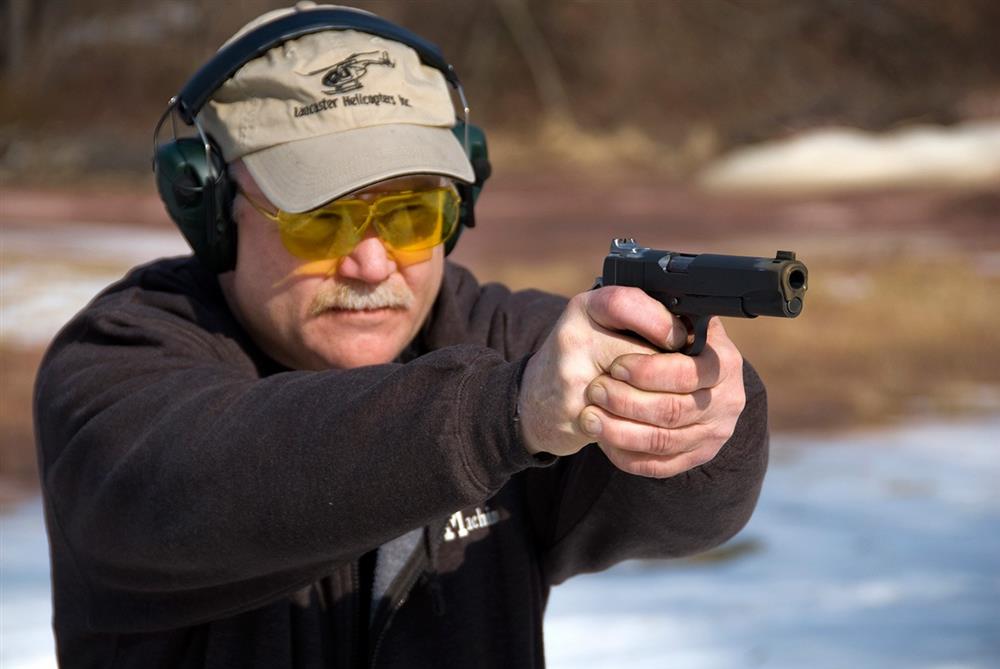
Final cleanup of the scratches and rough edges was done back at the shop after the range session. After that, all that was left was surface blasting with aluminum oxide to smooth the surfaces, application of the finish, setting a gold bead in the front sight and pinning the sight to the frame, Jim completed these on his own after the class due to time constraints. As part of the tuition, we had a choice of black oxide (blueing) or black Teflon coating, both of which Jim applies in-house. I chose black Teflon because of its low reflectivity and its high lubricity, which reduces the need for oil and helps keep the pistol running.
Suffice to say, there were lots of steps that we performed that I did not detail here. If I had, this article would have turned into a book—literally. The attention to detail required to build a pistol of this quality is astounding. Every component—save for firing pin and a few springs—was modified. In most cases, several functional modifications were made to each part, in addition to reshaping. This class instilled a tremendous appreciation for the knowledge and skills needed to hand build a pistol of this quality, and has forever deepened my respect for John Browning’s design that has not just survived a century, but continues to serve as a primary weapon for our military, police, and the armed citizen.
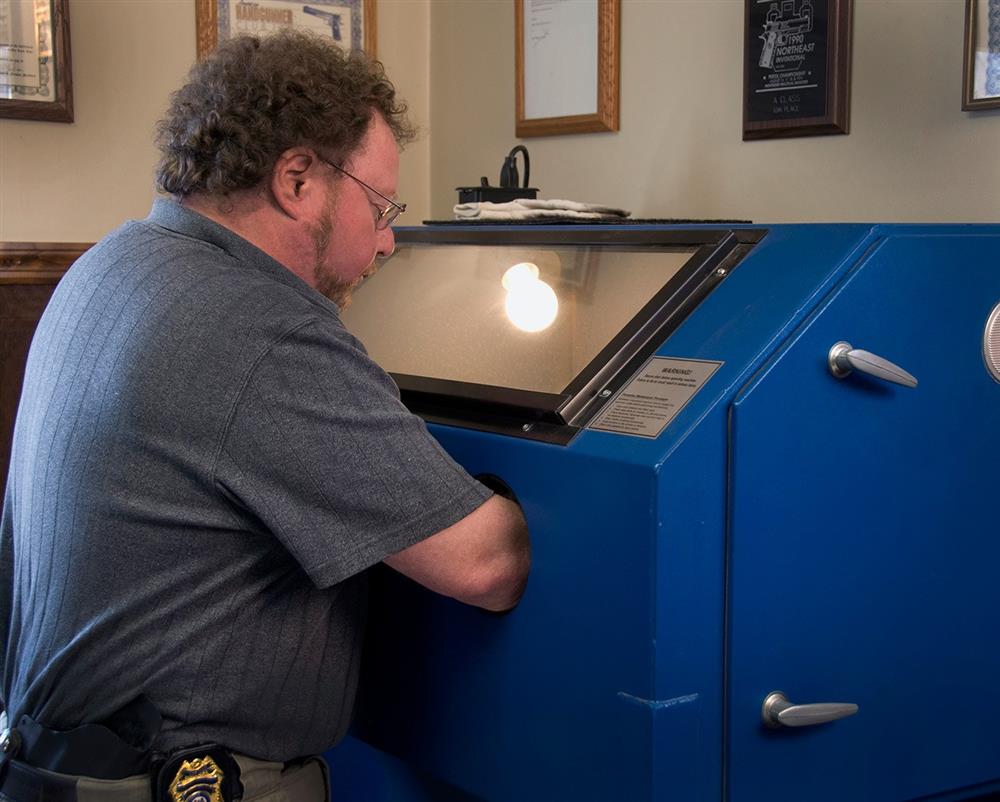
Parting Thoughts
I would be remiss if I did not admit that I was somewhat apprehensive about spending a week behind a bench, but Jim’s teaching and personal attention made it easy and the hours flew by quickly. Jim not only taught us what we needed to do, but why it was necessary. He demonstrated how each part worked and interacted with the rest of the system. This information is not only useful in building pistols, but for diagnosing malfunctions as well. If you own a 1911, you will find this class invaluable in understanding the function and operation of every component.
In addition to the knowledge and experience gained, I am now the proud owner of a well-built, defensive pistol that I painstakingly fit and assembled myself. This fact will be remembered with each pull of the trigger for years to come.


